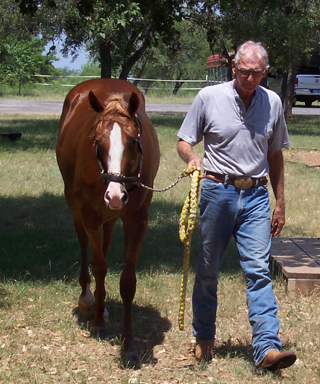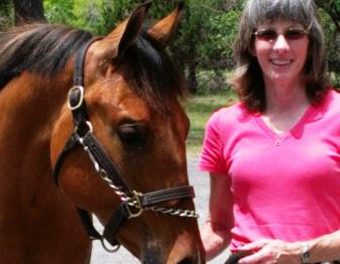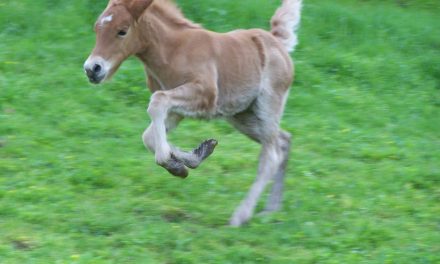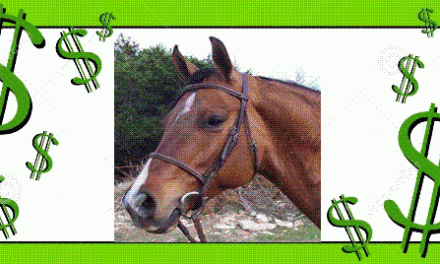A Horse, Of Course
Sometimes I like to pretend I’m the strong, silent type.
When it comes to horses, big mistake.
Horses don’t want you to be too strong. If you go macho-man, one of two bad things happens. The horse proves he’s stronger, or the horse gives up. In either case, the horse’s performance is always on the poor side.
If you take the silent approach with a horse, absolutely nothing happens. If you try to be a horse whisperer, very little happens. (A horse’s hearing range is 55 to 33,500 hertz–meaning a horse doesn’t hear as many low tones as a human does. Don’t whisper, speak up.)
I have a friend who says communication is the key to a successful relationship between a man and a woman. Is that her way of trying to get me to talk more, or talk less?
I know communication is the key to a successful relationship with a horse. In fact, communication is all there is to training a horse. The horse can physically perform all the exercises you’ll ever ask of him; you don’t actually teach him how to do any of them. The best you can hope for is to teach a horse to understand your request for a particular performance, and that he’ll act upon your request.
To begin communicating with a horse you must understand that he doesn’t speak English. (That doesn’t make him stupid. I don’t think you’re stupid just because you don’t speak piglatin.) In fact, a horse is pretty smart and he can learn some English, such as “ho,” “walk,” “trot,” “canter,” “jog” and “lope.” He will learn his name, and if used often enough a few unmentionable words tossed at him in anger. In addition to the English you teach him, he’ll have about 1400 words or body behaviors to express his opinion about things to you and his friends.
Of course, you also communicate with a horse through the use of your aids–weight, legs, hands and reins. Hopefully these aids are used to give subtle yet meaningful cues which the horse identifies as a request for action. Once the request is understood, as a willing partner, the horse performs and a happy relationship continues.
As with all learning, confrontation is a requirement.
If a request is made, and the horse does not perform as the trainer would like, then a confrontation has to take place. The horse has to understand the action was incorrect. (This is not and never should be abuse.) The request is made again, and if incorrect action follows, a new confrontation takes place. The confrontation can be anything appropriate from a thump with a heel to a forceful tipping of the nose. Stopping all action is a confrontation which works very well in getting the horse’s attention. The request is made again, and if this time the horse gets the action correct, praise should follow.
Communication with a horse, after only a little practice, becomes easy and very effective. As the partners get better at requesting and understanding, the communication signals become more and more refined.
Finally, the communication becomes a mental process. The rider thinks of what he or she wants in a performance, the aids make the request without conscious direction and the horse performs because he feels and understands the energy in the request.
One of the keys to reaching that level is to ALWAYS say what you mean and mean what you say.
If you decide to ask a horse to stop by saying “ho,” always say “ho.” Don’t say “ho” when you mean “slow, or relax, or half-halt.”
Ride a horse in training sessions exactly as you expect to ride the horse during any performance. That is consistency in communication, another requirement if learning is to take place. Riding a horse with two hands during a training session, then switching to one hand a few minutes later is communication confusion.






